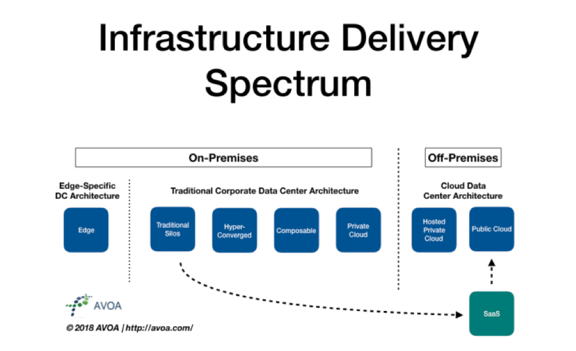Conferences tend to focus on macroeconomic trends in an industry, but that identification of key issues can sometimes leave users with the belief that wholesale commitment to a strategy or current trend is critical to their success. As an industry, we have seen this with several recent trends that have dominated conference agendas (see: energy efficiency, modularity, cloud, edge). The risk in this singular focus is that businesses are not homogenous. The choices they make for their data center strategy should be based on their unique service delivery requirements, not macroeconomic trends that are impacting the industry.
The adoption of public cloud is the most prevalent example of this, where IT organizations made wholesale commitments to migrate to the public cloud. Unfortunately, much of what drove this was cultural; an IT organization has always been viewed as a cost center in an organization. The promise of public cloud to reduce the cost to an IT organization afforded CIOs a major victory. However, while 100% of public cloud may work for some, most organizations are learning that public cloud needs to be one component of an infrastructure delivery strategy, not the entire strategy.
At Data Center Dynamics in New York this week, the conversation centered around the future of data centers and the challenges that IT organizations face in their service delivery requirements. I thought that Jan Wiersma’s Keynote emphasized the most important question facing IT decision makers today: how to identify the intelligent placement of workloads. There were critical takeaways from Jan’s keynote and other associated sessions:
What Really Matters
For organizations today, all that matters is how quickly you move from idea to value (or revenue) generation. The debate is not – and should not be – about cloud vs. on-premise. The best way for an organization to move from ideation to value delivered to the business is what should govern the placement of workloads. Because all businesses are different, this could mean leveraging cloud, on-premise, colocation, edge, or a combination of all.
Jan shared a great anecdote about how established companies like his (Avaya) are constantly threatened by startups because startup organizations are more agile and move more quickly. Avaya has historically issued one release per year; the threat of startups puts pressure on them to significantly improve this pace.
Cloud is a part of your strategy – not your whole strategy.
Utilization of public cloud services provides a number of benefits for IT organizations, especially in the access to massive centralized computing and storage power. However, that value will only provide a component of what is important for future service delivery requirements for IT organizations.
Today, 90% of enterprise-generated data is processed through traditional or cloud data centers. By 2025, Gartner predicts that only 25% of enterprise-generated data will be processed in the same way, with the shift in where data is being processed moving to the edge. Instead of centralizing in the cloud, organizations will need to decentralize across cloud, on-premise, and edge to most effectively deliver services to their users. This ‘ infrastructure delivery spectrum’ overview from Tim Crawford of AVOA does an excellent job of articulating this point.

IT is No Longer a Cost Center
Jan and others focused on an important shift in the view of IT in an organization: IT is no longer viewed as a cost center but rather as an enabler of business strategy. The fixation on cost control is becoming less critical for IT organizations as the focus is shifting to how IT strategy can enable success for the enterprise or institution. This shift empowers IT leaders to build infrastructure delivery models that most effectively support the delivery of services to users, and as a result, CIOs are focusing on how to intelligently place workloads between public cloud, on-premise, and edge rather than building an entire strategy around one methodology.